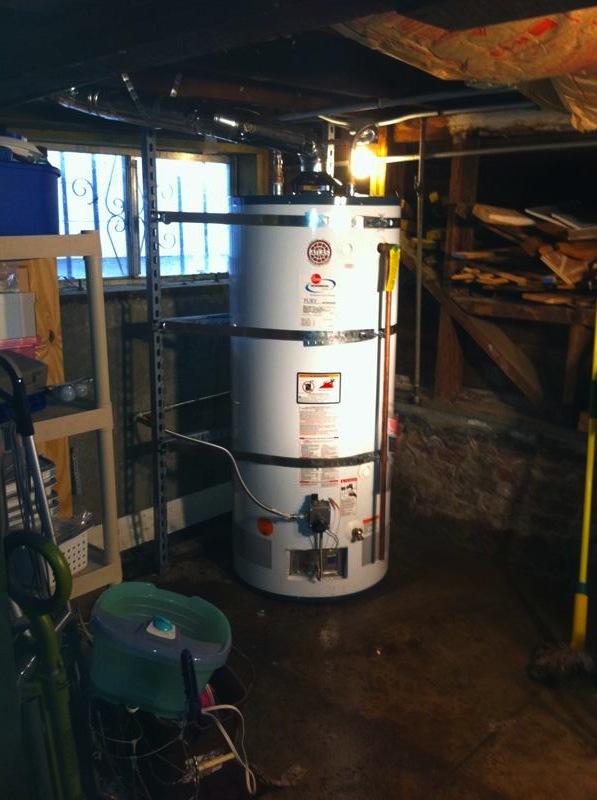
Being proactive about maintenance can make all the difference in your hot water heater’s performance and longevity. Photo: Atlas Plumbing & Rooter (2014)
Hoping to benefit from attributes like increased longevity and energy savings, many homeowners are making the switch from traditional water heaters to tankless models. For some, however, the costs of conversion and installation are prohibitively expensive, while for others the estimated financial returns of going tankless are too minimal to make it a viable option. In either case, a more cost-effective alternative is to maximize the life of your current water heater. While a traditional water heater’s average life expectancy is 10 to 12 years, this can be significantly extended with ongoing maintenance, and sometimes even doubled. Here are some important maintenance steps to take:
Flush the tank. Sediment buildup in a water heater’s tank inhibits operating efficiency and can significantly shorten the unit’s lifespan. To counteract this, flush your water heater’s tank every six months (you should do it more often if you have hard water).
Replace the sacrificial anode rod. Utilizing a process known as electrolysis, a sacrificial anode rod is designed to corrode in place of your water heater tank’s lining (hence the qualifier “sacrificial”). However, once corroded, an anode rod ceases to serve its function, which leaves your water heater susceptible to rust. While a typical anode rod should last four to five years, additional factors such as the use of water softeners can result in accelerated wear, which is why it’s a good idea to inspect yours annually and replace it as needed.
Monitor water pressure. To prevent issues ranging from premature wear to catastrophic explosion, it’s vital for a water heater to maintain proper water pressure—typically between 60 and 80 psi. If water pressure is too high, you may need to replace the temperature and pressure (T & P) valve. Test the valve by opening it: if it doesn’t release water, it needs to be replaced.
Perform routine visual inspections. Simply being aware of your water heater can make the biggest difference in its lifespan. When a water heater is neglected, even something as minor as a small leak can turn into a major problem, so be sure to inspect yours periodically.
To find a Diamond Certified plumbing company in your area, click on one of the links below.
Alameda County: www.diamondcertified.info/alameda-plumbing
Contra Costa County: www.diamondcertified.info/contra-costa-plumbing
Marin County: www.diamondcertified.info/marin-plumbing
San Francisco: www.diamondcertified.info/san-francisco-plumbing
San Mateo County: www.diamondcertified.info/san-mateo-plumbing
Santa Clara County: www.diamondcertified.info/santa-clara-plumbing
Santa Cruz County: www.diamondcertified.info/santa-cruz-plumbing
Solano County: www.diamondcertified.info/solano-plumbing
Sonoma County: www.diamondcertified.info/sonoma-plumbing
One Response
Leave a Reply
You must be logged in to post a comment.

I never realized that I need to replace the anode rod. I definitely don’t want my water heater to start to rust. Is this something I could do myself?